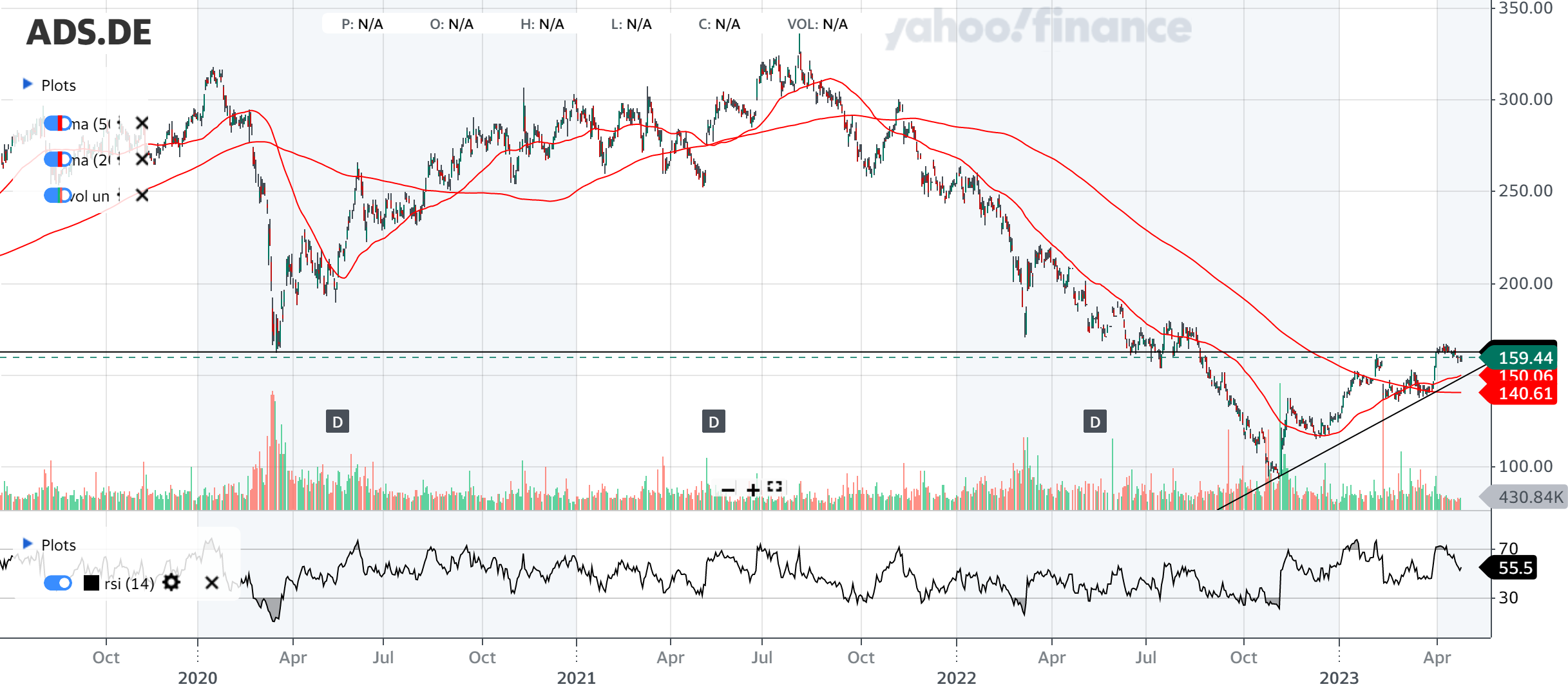Adidas – ADS

Fundamental analysis
The German company Adidas was founded by the Dassler brothers in Herzogenaurach, Bavaria, in 1924 as a manufacturer of sports shoes for athletes. The brothers split up in 1947, with the elder Rudolf founding the company Ruda (short for Rudolf Dassler), which would later be renamed Puma. The younger Adolf (nicknamed Adi) sets up a second company, Adidas (from Adi Dassler).
The company buys the famous three stripes of the Adidas logo later in 1952 from Finnish sports shoe manufacturer Karhu Sport for two bottles of whisky and the equivalent of €1,600.
Adidas focuses on building a global brand through in-house product development, innovation and sponsorship. The current “Own the game” business strategy is under review and is likely to be changed.
The company’s revenue distribution comes from:
- 61% wholesale
- 19 % own retail
- 20% e-commerce
Adidas focuses on sportswear and sports accessories. It supplies its products to almost every country in the world with the exception of a few such as Russia, North Korea and Turkmenistan. The main production is in Asia, where 91 % of the products come from. The production is spread over several countries (Cambodia, Pakistan, India, China, Indonesia and others). The company is thus not dependent on only one country for the production of its products.
Results
Since January 2023, the company has been led by a new CEO, Bjorn Gulden. He is aiming for 2024 and 2025, considering 2023 as the year of the company’s transformation.
The company expects a decline in turnover, profit and other indicators in 2023 even in view of the transformation.
Although there was a 6% increase in turnover in 2022 compared to 2021, there was a 1.1% decrease in profit. Overall, there is a 70% decline in net profit in 2022 to €612 million.
The rising cost of inputs is a problem for the company’s production. The company is also heavily impacted by uncertainty and revenue shortfalls from China.
Technical analysis
The share price is at its lowest since 2016, having lost 70% since its peak (the lowest was in autumn 2022). It is now trading at a loss of about 50% from the highs of 2021.
After a long downtrend, the moving averages have crossed and signal an uptrend. Long-term resistance around €165 per share has historically turned into support and vice versa. Price has been near this significant level for several weeks and is waiting.
The RSI is in the neutral zone.
Conclusion
Adidas is interesting because its stock has rallied strongly over the past year. However, thanks to 2022 results and with an eye on 2023, there is reason to do so. Although the financial returns are not great, the value of the stock and its valuation is still high. Given the change of CEO in January 2023 and the search for a new strategy or a significant adjustment to the current Own the Game strategy, it is difficult to predict the stock’s long-term development.
In the short term, a look at technical analysis is in order. Resistance at 165 euros is an interesting price and any news or market shakeout can help the stock to fall again. Conversely, breaking through the resistance may help the stock to rise.
Sources:
https://www.adidas-group.com/en/investors/overview/
https://report.adidas-group.com/2022/en/
https://www.adidas-group.com/en/medi